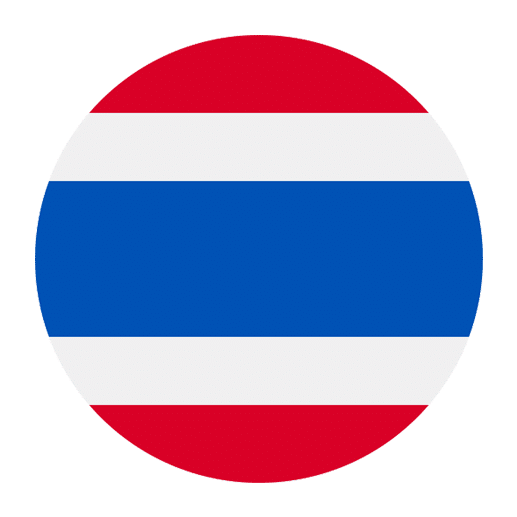Thai, the official language of Thailand, is a fascinating and melodious language, rich in culture and history. For English speakers embarking on the journey to learn Thai, one of the essential steps is to understand its sentence structure. Though it may seem daunting at first, with a bit of practice and a clear understanding of the fundamentals, you can master Thai sentence construction. This article aims to provide you with a comprehensive guide to Thai sentence structure, covering the essentials and offering practical examples to aid in your learning process.
The Basics of Thai Sentence Structure
At its core, Thai sentence structure follows a Subject-Verb-Object (SVO) pattern, similar to English. However, there are notable differences in how sentences are constructed, particularly in terms of grammar, word order, and the use of particles.
1. Subject-Verb-Object (SVO) Pattern
In Thai, the basic sentence structure consists of a subject, followed by a verb, and then an object. Here are some simple examples:
– ฉันกินข้าว (Chan gin khao) – I eat rice.
– ฉัน (Chan) – I (subject)
– กิน (gin) – eat (verb)
– ข้าว (khao) – rice (object)
– เขาไปโรงเรียน (Khao pai rongrian) – He/She goes to school.
– เขา (Khao) – He/She (subject)
– ไป (pai) – go (verb)
– โรงเรียน (rongrian) – school (object)
2. Verb Placement
Just like in English, verbs in Thai sentences typically come after the subject and before the object. However, Thai verbs do not change form based on tense or subject. Instead, context and additional words (such as time indicators) provide the necessary information.
3. No Conjugation
One of the key differences between Thai and English is that Thai verbs do not conjugate. This means that verbs remain the same regardless of the subject or tense. For example:
– ฉันกิน (Chan gin) – I eat.
– เขากิน (Khao gin) – He/She eats.
In both sentences, “กิน” (gin) remains unchanged.
4. Time Indicators
Since Thai verbs do not conjugate, indicating tense requires the use of time indicators or context clues. Common time indicators include:
– แล้ว (laeo) – already (used for past tense)
– จะ (ja) – will (used for future tense)
– กำลัง (kamlang) – currently (used for present continuous tense)
Examples:
– ฉันกินข้าวแล้ว (Chan gin khao laeo) – I have eaten rice.
– ฉันจะกินข้าว (Chan ja gin khao) – I will eat rice.
– ฉันกำลังกินข้าว (Chan kamlang gin khao) – I am eating rice.
Particles and Their Roles
Particles play a crucial role in Thai sentence structure. These small words or syllables are used to add meaning, indicate politeness, or provide emphasis. Some common particles include:
1. Politeness Particles
Thai is a language that places great importance on politeness. Politeness particles are added to the end of sentences to show respect. The two most common politeness particles are:
– ครับ (krap) – used by males
– ค่ะ (ka) – used by females
Examples:
– ขอบคุณครับ (Khob khun krap) – Thank you (male speaker).
– ขอบคุณค่ะ (Khob khun ka) – Thank you (female speaker).
2. Question Particles
To form questions in Thai, you often add question particles to the end of a sentence. The most common question particle is:
– ไหม (mai)
Examples:
– คุณสบายดีไหม (Khun sabai dee mai) – Are you well?
– คุณ (Khun) – You (subject)
– สบายดี (sabai dee) – well (verb + adjective)
– ไหม (mai) – question particle
3. Emphasis Particles
Emphasis particles are used to stress or highlight a point in a sentence. Some common emphasis particles include:
– นะ (na) – used to soften requests or statements
– ล่ะ (la) – used to emphasize or contrast
Examples:
– ช่วยหน่อยนะ (Chuay noi na) – Please help.
– แล้วคุณล่ะ (Laeo khun la) – And you?
Complex Sentence Structures
Once you have a grasp of basic Thai sentence structure, you can move on to more complex sentences. These include compound sentences, relative clauses, and sentences with conjunctions.
1. Compound Sentences
Compound sentences in Thai are formed by combining two or more simple sentences using conjunctions. Common conjunctions include:
– และ (lae) – and
– แต่ (tae) – but
– หรือ (reu) – or
Examples:
– ฉันชอบกินผลไม้และผัก (Chan chop gin phonlamai lae phak) – I like to eat fruits and vegetables.
– เขาอยากไปทะเลแต่ไม่มีเวลา (Khao yak pai thalay tae mai mi wela) – He/She wants to go to the beach but doesn’t have time.
2. Relative Clauses
Relative clauses in Thai are used to provide additional information about a noun. They are introduced by the word “ที่” (thi), which functions similarly to “that” or “which” in English.
Examples:
– หนังสือที่ฉันอ่าน (Nangseu thi chan an) – The book that I read.
– หนังสือ (Nangseu) – book
– ที่ (thi) – that/which
– ฉัน (chan) – I
– อ่าน (an) – read
– บ้านที่เขาอยู่ (Baan thi khao yu) – The house where he/she lives.
– บ้าน (Baan) – house
– ที่ (thi) – where
– เขา (khao) – he/she
– อยู่ (yu) – lives
3. Conjunctions
Conjunctions in Thai are used to connect clauses or sentences. Some common conjunctions include:
– เพราะว่า (phro wa) – because
– ดังนั้น (dang nan) – therefore
– ถ้า (tha) – if
Examples:
– ฉันไม่ไปเพราะว่าฝนตก (Chan mai pai phro wa fon tok) – I am not going because it is raining.
– เขาเหนื่อยดังนั้นเขาจะพัก (Khao nueai dang nan khao ja phak) – He/She is tired, therefore he/she will rest.
Sentence Construction with Adjectives and Adverbs
Understanding how to use adjectives and adverbs in Thai sentences is crucial for adding descriptive detail and nuance.
1. Adjectives
In Thai, adjectives typically follow the nouns they describe. Unlike English, where adjectives usually precede nouns, Thai adjectives come after the noun.
Examples:
– รถสีแดง (Rot see daeng) – Red car
– รถ (Rot) – car
– สีแดง (see daeng) – red
– บ้านใหญ่ (Baan yai) – Big house
– บ้าน (Baan) – house
– ใหญ่ (yai) – big
2. Adverbs
Adverbs in Thai often follow the verb they modify. This is different from English, where adverbs can appear in various positions within a sentence.
Examples:
– เขาพูดเร็ว (Khao phut reo) – He/She speaks quickly.
– เขา (Khao) – he/she
– พูด (phut) – speaks
– เร็ว (reo) – quickly
– ฉันเดินช้า (Chan doen cha) – I walk slowly.
– ฉัน (Chan) – I
– เดิน (doen) – walk
– ช้า (cha) – slowly
Practical Tips for Mastering Thai Sentence Structure
Here are some practical tips to help you master Thai sentence structure and improve your overall language skills:
1. Practice Regularly
Consistent practice is key to mastering any language. Dedicate time each day to practice constructing sentences in Thai. Use flashcards, language apps, and online resources to reinforce your learning.
2. Listen and Imitate
Listening to native Thai speakers and imitating their sentence structures can be incredibly beneficial. Watch Thai movies, listen to Thai music, and engage in conversations with native speakers whenever possible.
3. Use Language Exchange Partners
Language exchange partners can provide valuable feedback and help you practice constructing sentences in real-time. Platforms like Tandem and HelloTalk can connect you with native Thai speakers interested in language exchange.
4. Study Grammar Rules
While practice is essential, understanding the underlying grammar rules is equally important. Invest time in studying Thai grammar to gain a deeper understanding of sentence structure.
5. Be Patient and Persistent
Learning a new language takes time and effort. Be patient with yourself and stay persistent in your studies. Celebrate your progress, no matter how small, and keep pushing forward.
Conclusion
Understanding Thai sentence structure is a fundamental step in mastering the Thai language. While there are differences between Thai and English, with practice and dedication, you can become proficient in constructing Thai sentences. Remember to focus on the basics, such as the Subject-Verb-Object pattern, and pay attention to the use of particles, time indicators, and adjectives. By incorporating these elements into your practice routine and utilizing practical tips, you’ll be well on your way to becoming a confident Thai speaker. Happy learning!

